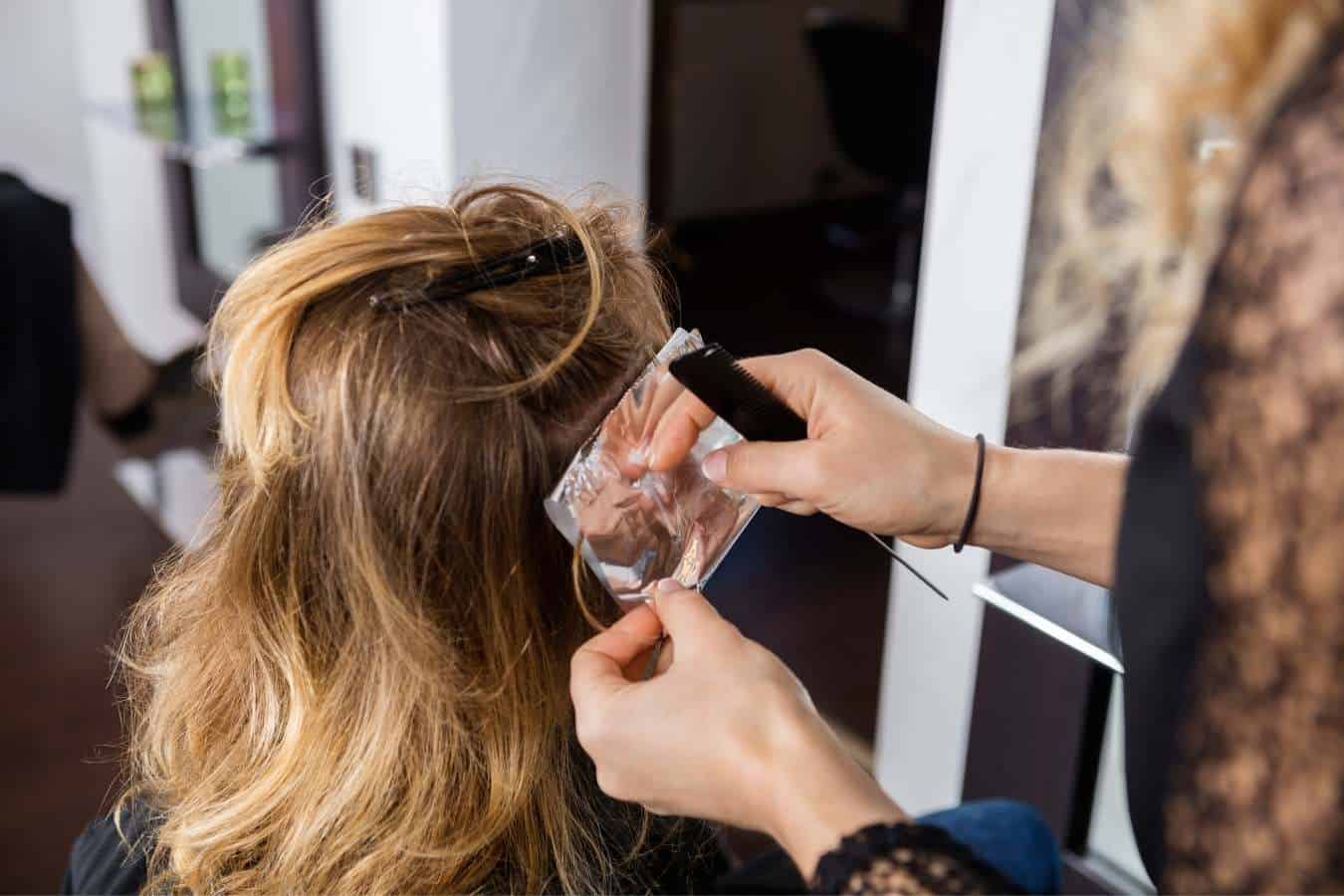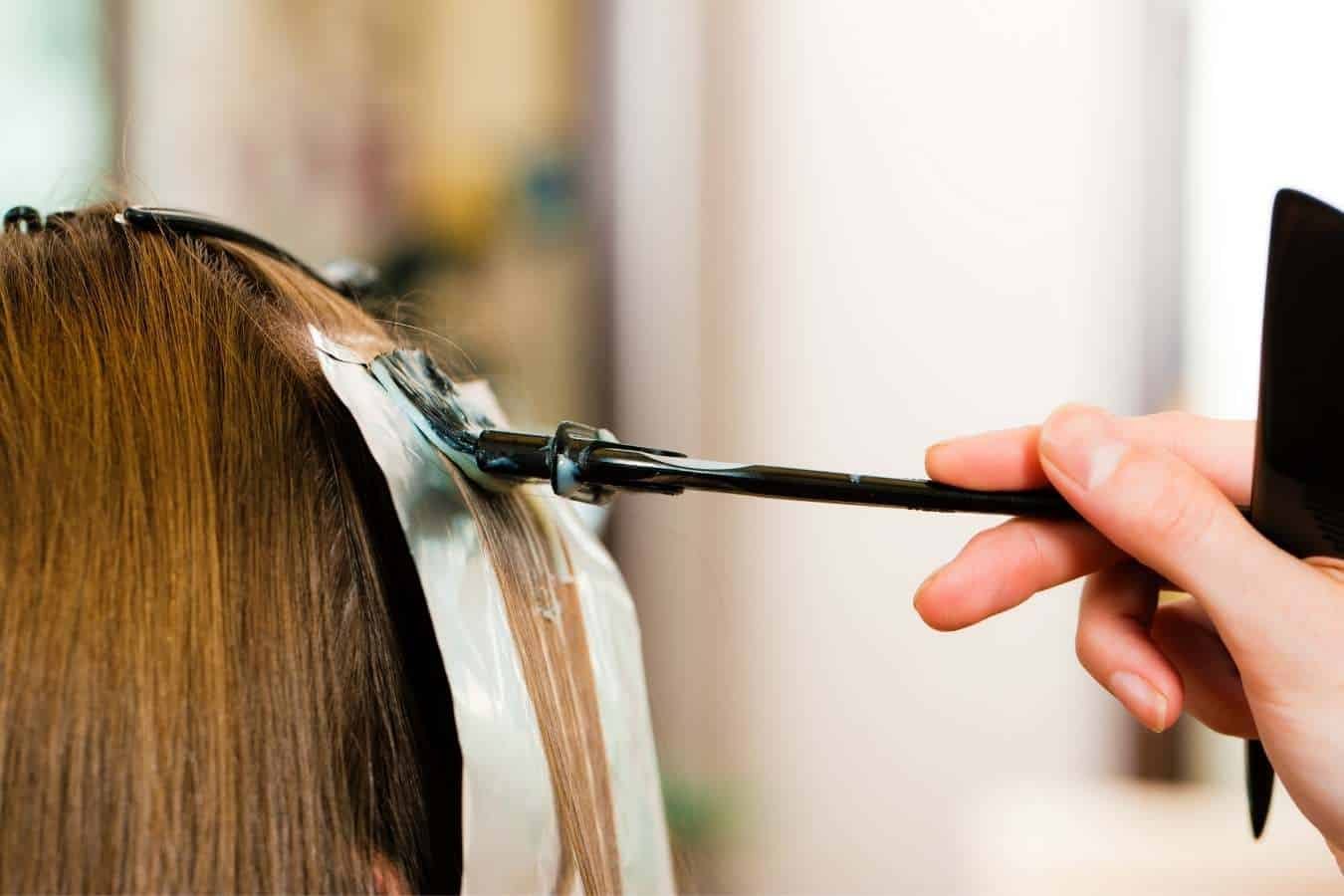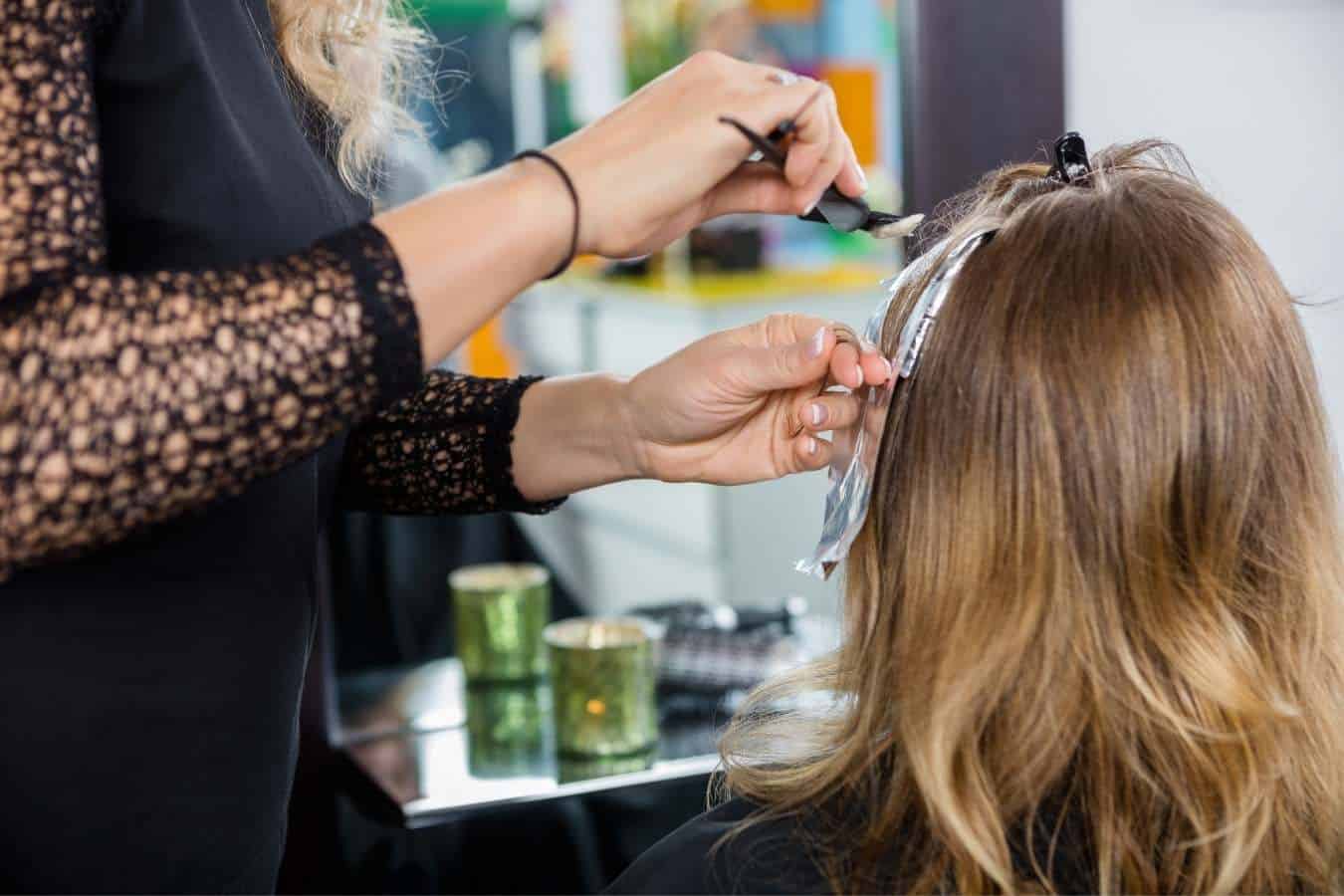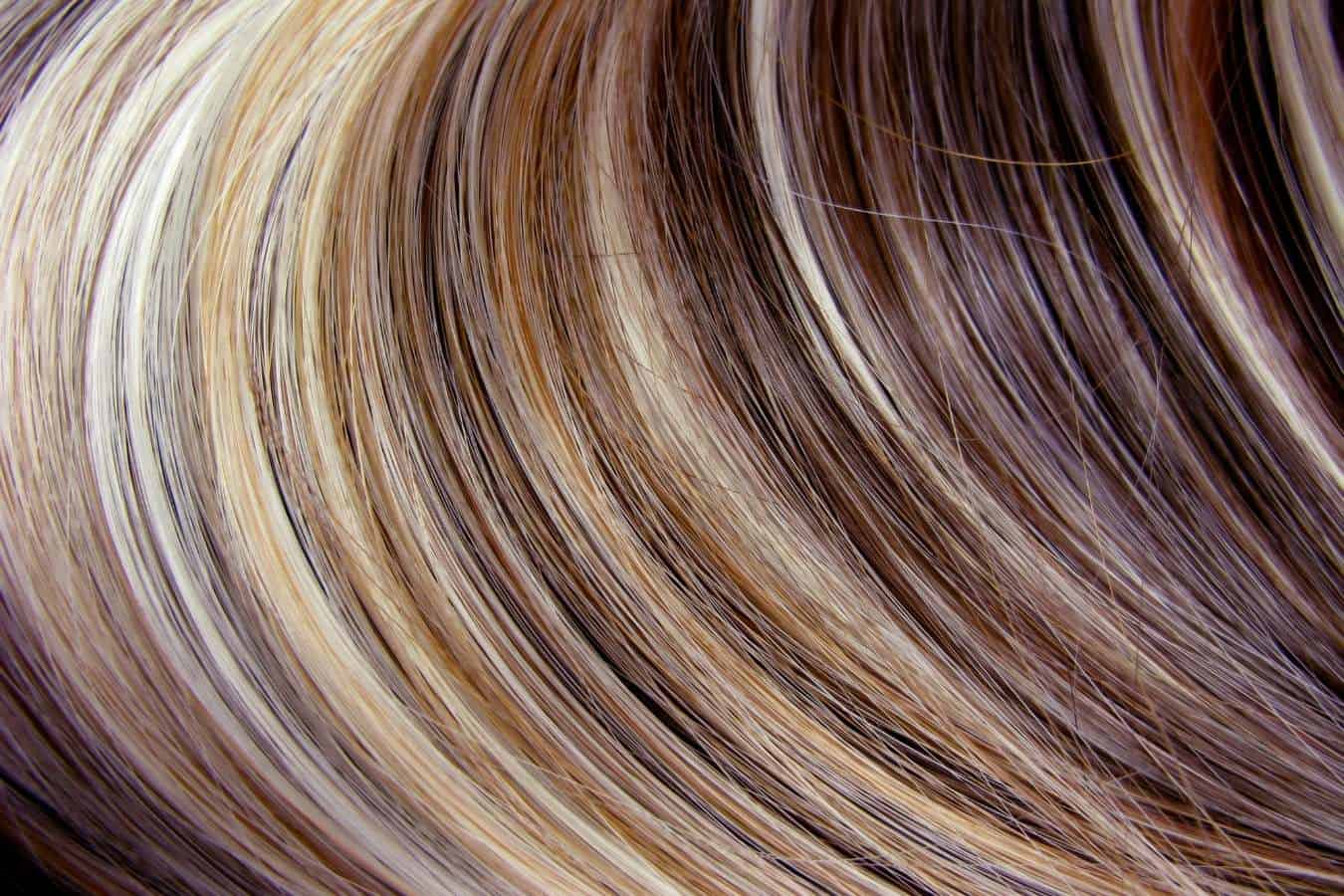Typically, you have one of two options when it comes to balayage hair — partial or full. Let’s compare partial balayage vs full balayage hair to help you decide which look is right for you.

Balayage involves the application of hand-painted highlights to hair. When you compare partial balayage vs full balayage, the main difference is that partial balayage is subtle and occurs in one area of the hair, usually the top layer or around the face. Full balayage highlights are added throughout the hair.
What Is A Partial Balayage?
To begin with, balayage is a hair highlighting technique.
Balayage is a French word that means sweeping, and it refers to the way the hair lightener is swept or painted onto hair to create highlights that look more natural.
The main difference between balayage and traditional highlights is that highlights involve folding your hair into foils that are heated.
This lightens hair strands uniformly from root to tip while leaving some strands untouched in-between each foil.
On the other hand, balayage is a freehand coloring technique where the lightener creates thinner highlights at the roots that become thicker towards the ends.
Balayage hair doesn’t have any stripes from foil lines, giving it a more subtle, natural, and multi-dimensional look.
When it comes to partial balayage, and as the name would suggest, you lighten only a specific section of your hair instead of your entire mane.
Partial balayage usually involves the top layer of your hair or the hair sections that frame your face.
The highlights are also more focused at the ends.
This makes partial balayage even more subtle. Your colorist only targets sections of your hair that will bring optimum definition to your strands while ensuring that your hair color remains as natural as possible.
Difference Between Partial And Full Balayage

Partial balayage vs full balayage is a topic that often comes up when discussing balayage options with your hairdresser.
The truth is, partial balayage is more of a marketing trend to promote simple or subtle highlights.
Partial balayage is different from traditional or full balayage, which involves highlighting or brightening every section or layer of your hair.
Whether you choose partial or full balayage, your hairstylist will hand paint the dye directly onto your hair using long, sweeping strokes that don’t follow the typical root-to-tip pattern.
Each balayage hairstyle is unique because the highlights are applied using a painterly style. This produces a personalized finish that matches your unique coloring needs.
Still, partial balayage is distinctly different from full balayage.
Below we look at the factors that differentiate partial balayage from full Balayage:
Application Area
As the names suggest, partial balayage focuses on highlighting only specific areas of your hair, while full balayage involves highlighting every section and layer of your head.
Generally, partial balayage focuses on the top layers or the front, face-framing layers.
Effect On Hair
Partial balayage is kinder on your hair because only some selections of your hair are bleached. Less bleach is used, resulting in less damage to hair. Most of your hair is bleached in full balayage, which weakens the hair shafts more.
Visual Results
Partial balayage adds accents of brightness or color to your hair, creating a more subtle look.
In contrast, traditional balayage creates a more noticeable color change, gives your hair more lift, and the finished look is more dramatic.
Ideal Candidates
In a nutshell, partial balayage is suitable for people going for a subtle, highlighting effect. It’s also great if you want a less damaging procedure on hair than other color styling techniques.
But full balayage is a better option if you want a more pronounced color lift and a radical change to your hairstyle.
Cost
Naturally, partial balayage is more affordable since it’s applied to only some sections of your hair. More often than not, partial balayage only requires one initial visit to your hairdresser.
A full balayage is more costly because it can require more than one visit before. Generally, partial balayage may range from $70 to $150, while full balayage ranges from $200 to $500.
The exact figure will vary widely, depending on your location, colorist rates, and hair coloring needs.
Time Required
Since partial balayage is not applied to your entire hair, it takes less time to achieve the desired, sun-kissed effect.
Conversely, full balayage takes longer and requires additional visits to create a more textured and full-dimensional look.
Maintenance
Partial balayage requires less maintenance than full balayage.
That’s because the new growth in partial balayage is less, so you need fewer follow-up visits to your hairdresser.
Full balayage shows a lot of regrowth in a short amount of time and may require toning and hairline touch-ups to maintain the warm, sun-kissed look.
However, both balayage techniques require less maintenance than other hair coloring procedures.
Life Span
Balayage is designed to be lived with for longer. If you want the subtle warmth and dimension of partial balayage, the hairstyle can last for 12-14 weeks.
But if you want the significant lightening of full balayage, you may need to go to the salon sooner than this.
How Long Does A Partial Balayage Take?

On average, a partial balayage takes between 40 to 90 minutes. Here’s what you can expect at a typical balayage appointment:
Hair Assessment
Before your colorist begins sweeping on the partial balayage, they will want to know your preferred placement.
With partial balayage, you can focus on the face-framing layers or the top layers. It’s often recommended to bring inspiration photos that best represent the look you’re trying to achieve.
The photos help your colorist to better understand your color goals.
Hand Painting Hair
Your colorist will sweep lightener onto the selected sections of your hair.
Different colorists use different balayage techniques, but experienced colorists tend to be more creative and produce a more personalized, multi-dimensional finish.
The freehand painting process will take longer if you’re going lighter. In addition, you may have to sit under the dryer to accelerate the lightening process.
Toning
After rinsing the lightener, your colorist will usually apply toner or gloss. Toning helps you achieve a more precise tone by tweaking the highlights, so they blend more with your natural base color.
After this, you’ll be ready for a protein treatment, shampooing, and conditioning.
Blow Drying And Styling
The final stage involves washing out the product, trimming, blow-drying, and styling. This will perfect your balayage hair and enhance the visual results.
Who Should Go For A Partial Balayage?
Partial balayage might be best for you if you:
- Want a less time-consuming coloring procedure
- Want softer regrowth
- Prefer a more subtle, sun-kissed effect
- Have a tighter budget since partial balayage is less expensive than the full treatment
- Want a color treatment that’s less aggressive on your hair since less bleach is used
- Want balayage hair that’s easier and cheaper to maintain (fewer follow-up appointments)
- Have never dyed hair (full balayage might result in a too radical color change)
- Have shorter hair (to prevent extensive damage from the bleaching that can leave you with even shorter locks)
- Want to try out a new hair color trend before committing – you can quickly grow out partial balayage if you don’t like the color
How Long Does A Full Balayage Take?

Full balayage typically takes between 3 to 5 hours. The procedure for a full balayage is similar to the partial balayage procedure.
The main difference is that the balayage is swept throughout your hair, including the top and bottom layers.
Your colorist will add lightener to every hair section, making sure to select the hair strands that will best bring your hair and complexion to life.
Who Should Go For A Full Balayage?
Full Balayage might be right for you if you:
- Want hair with a more noticeable lift or a radical color change
- Don’t mind paying the higher price for all-over lightened hair
- Don’t mind the longer appointments and more frequent salon visits
- Are OK with the extra expense and effort needed to maintain full balayage
- Have dyed your hair before (that way, it’s easier to know which radical color change suits you the most)
- Have long hair (balayage has more visual impact on longer hair)
How to Take Care of Balayage Hair
Partial or traditional balayage hair will last longer if maintained properly. Remember, color treatments weaken hair, so avoid using a hairdryer, flat iron, or other heat treatments on balayage hair.
Alternatively, use the lowest heat setting and apply a heat protectant before styling.
In addition, make sure you’re using the best products for balayage hair. Quality products have color-protecting abilities.
Some shampoos and conditioners can even help you combat brassiness caused by too many warm highlights.
Be sure to apply a weekly hair mask to give your colored hair the extra nourishment it needs after chemical processing.
Last but not least, scheduling follow-up appointments will help keep your mane bright and colorful, so you can stay on-trend.
Disclaimer: This site is not intended to provide professional or medical advice. All of the content on LovedByCurls.com is for informational purposes only. All advice should be followed at your own discretion. Ingredients may change at any time so always check the product label before using. Check our full disclaimer policy here.
